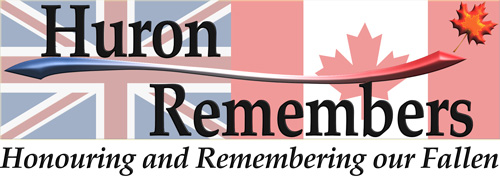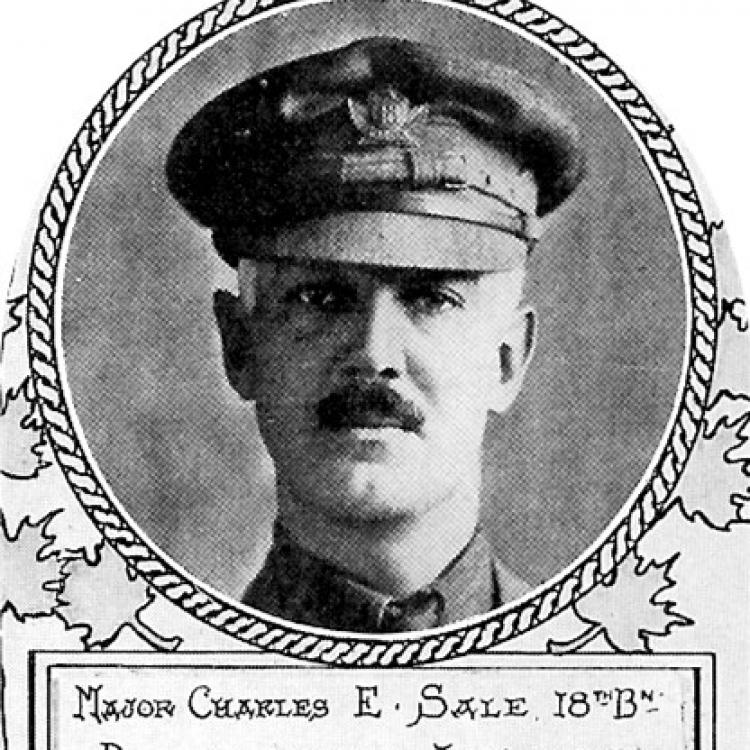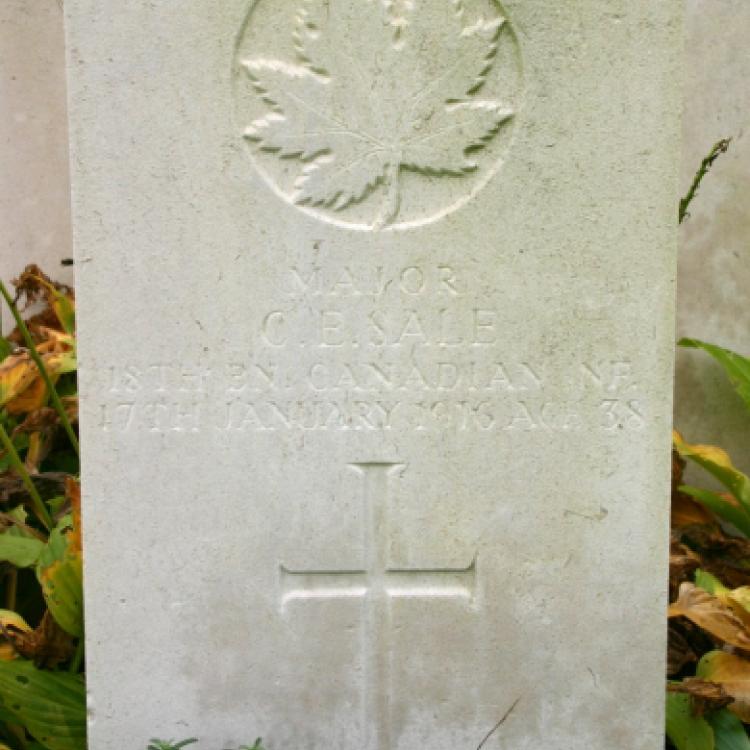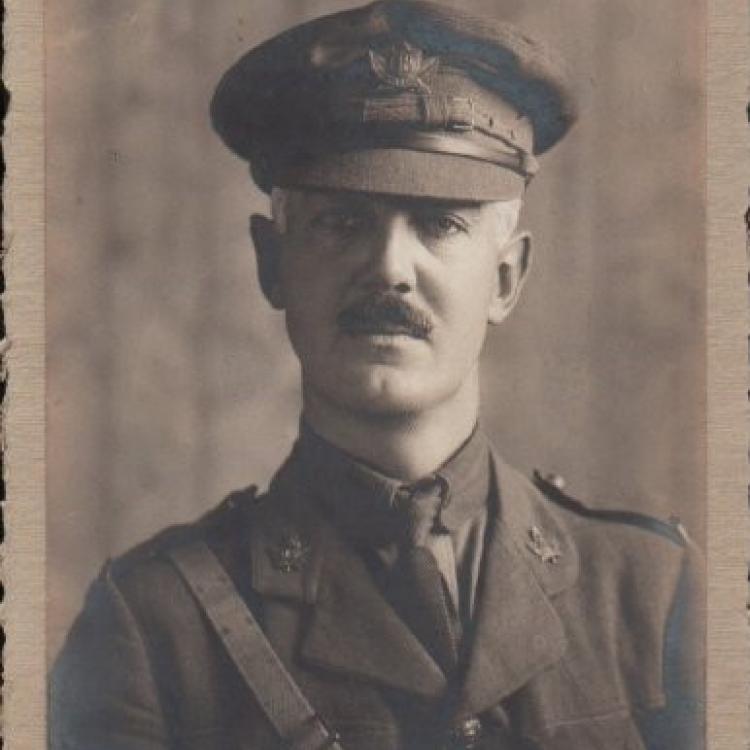SALE, Charles Edward
Next of Kin: Kate H. Sale, Goderich, Ontario
Occupation: Dental Surgeon
Personal Details: 6 ft., 156 lbs.
Born in London Township, Charles Edward Sale received his early education in London and St. Marys, and attended the Royal College of Dental Surgeons from 1900-04. After graduating, Dr. Sale established a dental practice in Goderich, where he lived with his wife Kate, and children Edward and Catherine, on Kingston Street. He was a well-respected resident of Goderich, being a leader of the Menesetung Canoe Club, Past Master of the local Masonic Lodge, an Oddfellows member, as well as a valued member of St. George’s Anglican Church.
Prior to the war, Dr. Sale served with the 33rd Huron Regiment, Canadian Militia, attaining the rank of Captain. He joined the 18th Battalion in November 1914, and was promoted to the rank of Major on March 15th, 1915. The battalion embarked at Halifax aboard the S.S. Grampian on April 18th, 1915, and proceeded to France in mid-September. Major Sale suffered a sprained ankle on September 25th when the battalion moved into reserve trenches near Ypres, Belgium. He was sent to the 5th Canadian Field Ambulance and discharged 5 days later. Before he returned to the front he wrote a letter to Rev. J. B. Fotheringham that was published in The Clinton New Era, October 28, 1915, pg. 2: “I’m here in the 5th Field Ambulance Hospital with a sprained ankle and am having the best rest I’ve had in many moons. However I go back to the trenches tonight, and sleep there is a minus quality, but I’ve caught up pretty well during the past few days, so can stand it. There is not much doing on our front here; no hand-to-hand fighting and no bombing – chiefly artillery duels and sniping. We have not been shelled yet. The reason, we are too close to each other and they are afraid of shelling their own men. My particular section of the trenches is only thirty-five yards from the Germans. Their snipers are wonderful. It’s a sure cure for headache to put your head up over the parapet. They get you in thirty seconds as a rule. Put your head up twice in the same place and there is no doubt about the result. We’ve had very few casualties in the 18th so far and won’t have until we get the order to go forward or fall back. We are well entrenched and cannot be routed except by artillery fire. From what I can see our wire entanglements are superior to the Germans’ but I suspect they have the low kind, about six inches from the ground, which is quite as bad if not worse than any others.”
On December 5th, 1915, Major Sale was once again admitted to the 5th Canadian Field Ambulance with influenza and inflammation of his ankle. He was sent to the Divisional Rest Station at Locre, then on to Mt. Noir, where he was discharged to duty on December 18th.
On January 15th, 1916 the battalion relieved the 19th Canadian Battalion and moved into the trenches at Vierstraat, Belgium. At 9:30 pm on January 17th, Major Sale was badly injured in the right leg by an enemy rifle grenade. He was moved behind the lines where the Battalion Medical Officer, Captain Hale, tended to his wounds. He died later that evening at the 5th Canadian Field Ambulance. Major Sale was buried on January 19th at Bailluel Communal Cemetery Extension, Nord, France. Among those in attendance at his funeral was the General Officer Commanding Army Corps, General Officer Commanding 4th Brigade, and the Officer Commanding 18th Battalion and Company Officers.




